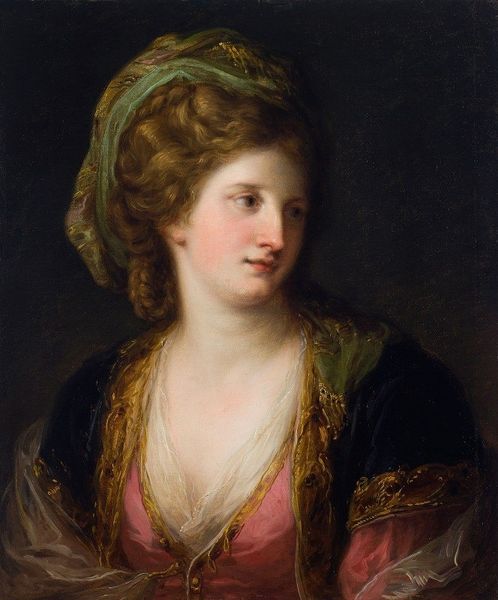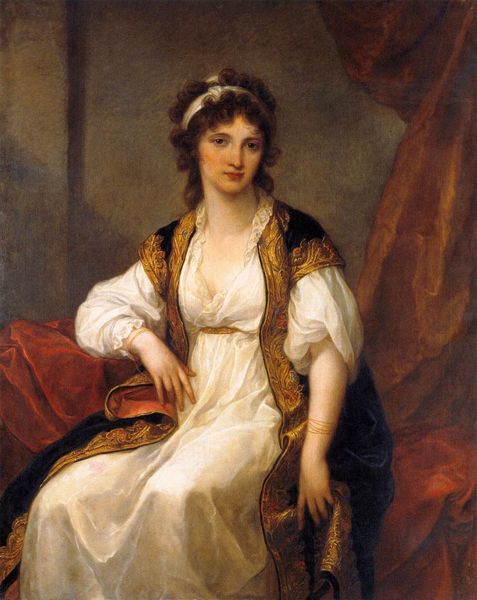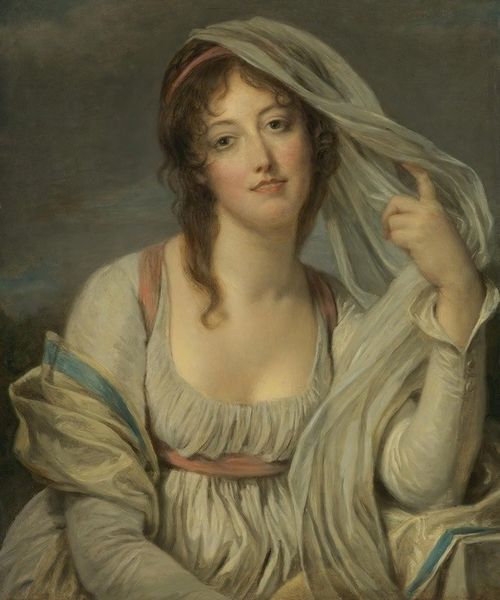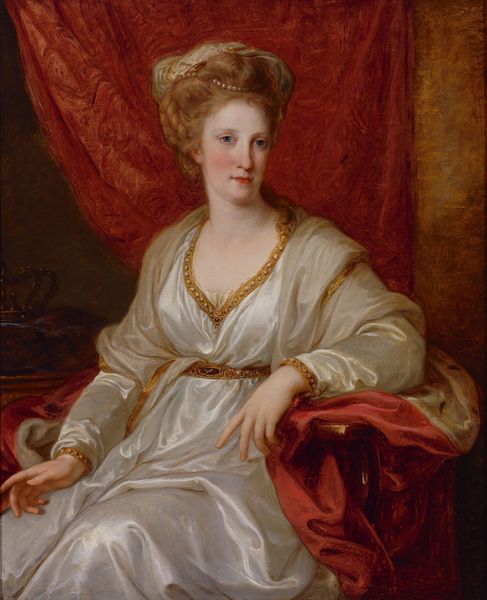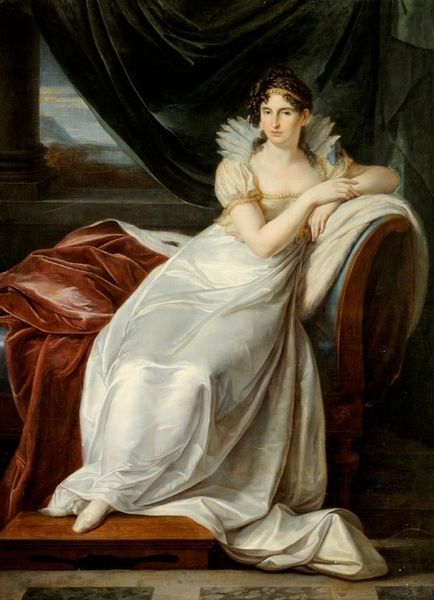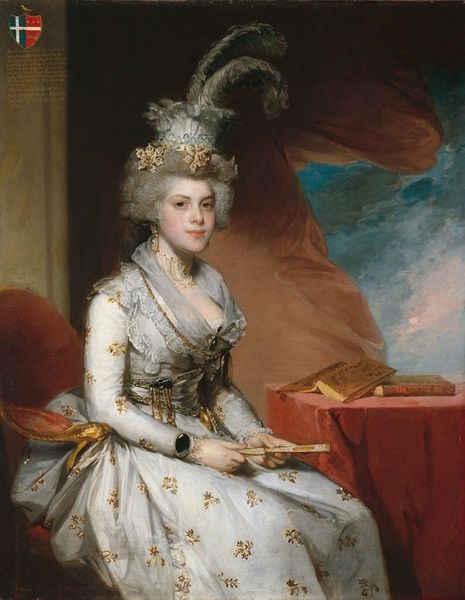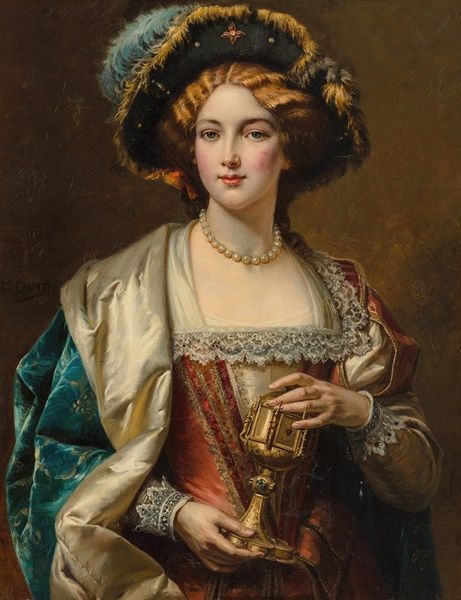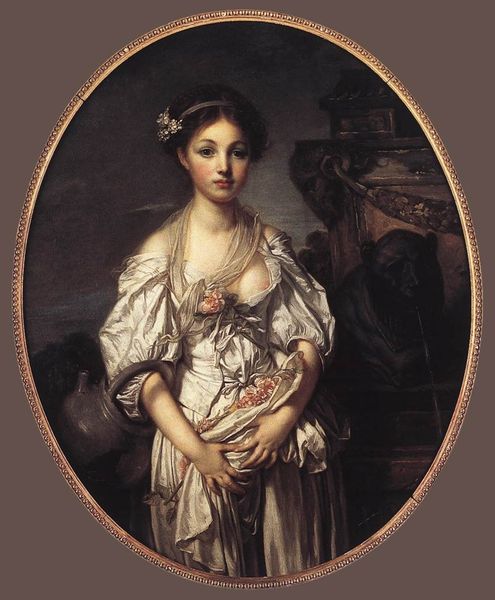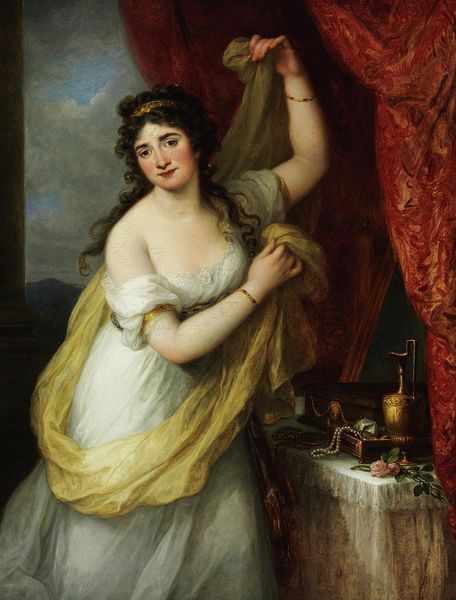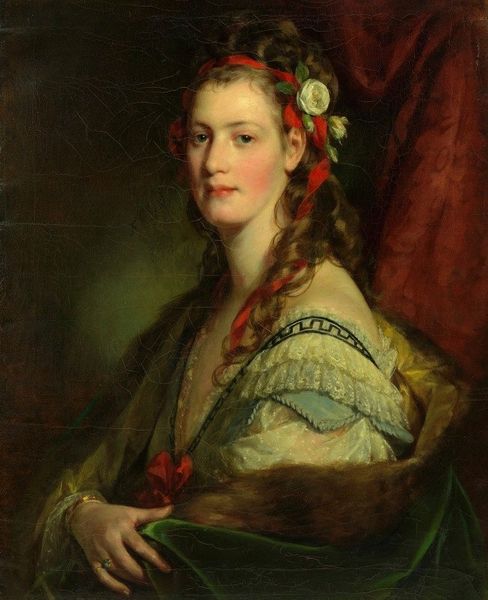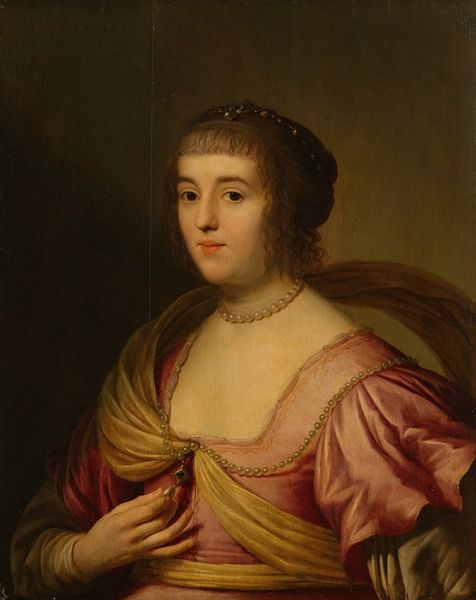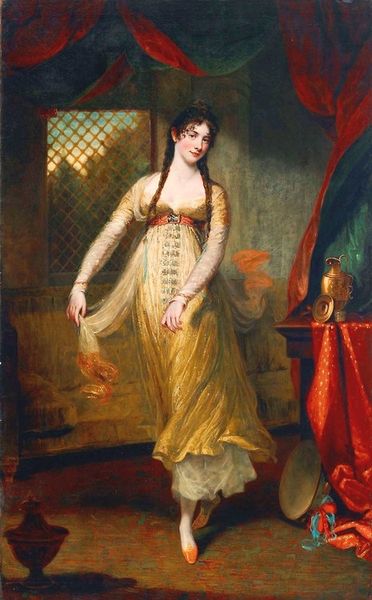
painting, oil-paint
#
portrait
#
figurative
#
painting
#
oil-paint
#
romanticism
#
history-painting
#
academic-art
Copyright: Public Domain: Artvee
Curator: I'm immediately drawn to the velvety texture of the emerald green cushion she's leaning on. It contrasts wonderfully with the shimmer of her russet-toned gown. Editor: That’s a keen observation. This is Elisabeth Louise Vigée Le Brun’s "Portrait of Princess Anna Alexandrovna Galitzin," created around 1797. It’s an oil painting that offers a fascinating lens through which we can examine the lives of aristocratic women in late 18th-century Europe and their negotiated social and political roles. Curator: Absolutely. The pose is carefully constructed to communicate both status and approachability. Notice how her gaze is directed slightly off-center, creating a sense of dynamic movement. This contrasts with the strict lines of academic art which tend to place figures centrally. Editor: I agree. And it speaks to Le Brun's position as a woman artist in a patriarchal system, simultaneously conforming to and pushing against the norms of her time. Her clothing, seemingly simple, yet opulent, also underscores this paradox. The turban, while fashionable, perhaps nods to an interest in other cultures, fitting with the exoticism common during the Romantic era, wouldn’t you say? Curator: It’s difficult not to read her position through a feminist lens—as a subject of the male gaze who is also actively constructing her own self-representation. Moreover, consider the broader socio-political context of the late 1790s: revolution in France, social upheaval. What does it mean to portray a Russian princess at this historical juncture? Editor: From a formal point of view, I’m intrigued by the artist’s rendering of light. Note the subtle gradations on the princess’s face, how the light falls to create an almost idealized form, drawing our attention away from a potential class critique and towards idealized beauty, an escape into aesthetics. Curator: True, the visual language creates a sort of barrier. Yet it cannot be ignored that such an image, crafted amidst societal turmoil, implies a statement, whether intentional or not. In what ways do these paintings allow for both agency and its limitations? That tension is endlessly captivating to me. Editor: Yes, reflecting on our exchange, it appears even a seemingly straightforward portrait offers multiple layers of meaning—from an examination of color and light, to the complex realities of gender and class.
Comments
No comments
Be the first to comment and join the conversation on the ultimate creative platform.
